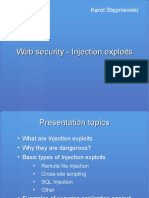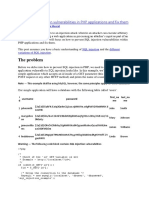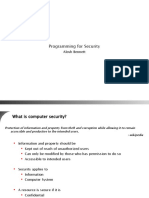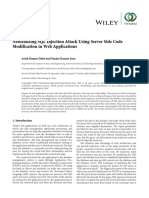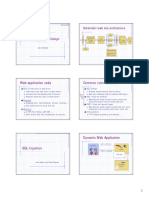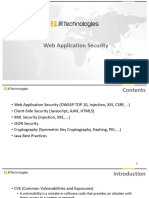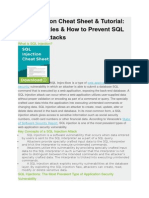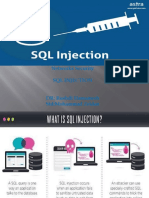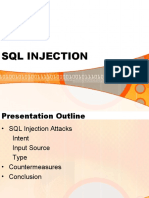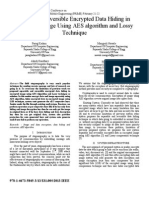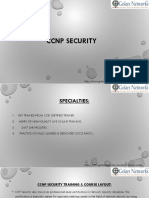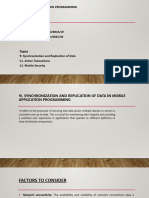0% found this document useful (0 votes)
12 views44 pagesChapter-02 Software Security Issues-Cs
Chapter 2 discusses software security issues, focusing on application software, command injection, SQL injection, and privilege escalation. It outlines the processes and parts of application software, details various types of injection attacks, their risks, and prevention methods. The chapter emphasizes the importance of input validation, secure coding practices, and robust authentication to mitigate security vulnerabilities.
Uploaded by
kirubelsintayehu96Copyright
© © All Rights Reserved
We take content rights seriously. If you suspect this is your content, claim it here.
Available Formats
Download as PDF, TXT or read online on Scribd
0% found this document useful (0 votes)
12 views44 pagesChapter-02 Software Security Issues-Cs
Chapter 2 discusses software security issues, focusing on application software, command injection, SQL injection, and privilege escalation. It outlines the processes and parts of application software, details various types of injection attacks, their risks, and prevention methods. The chapter emphasizes the importance of input validation, secure coding practices, and robust authentication to mitigate security vulnerabilities.
Uploaded by
kirubelsintayehu96Copyright
© © All Rights Reserved
We take content rights seriously. If you suspect this is your content, claim it here.
Available Formats
Download as PDF, TXT or read online on Scribd
/ 44

